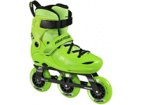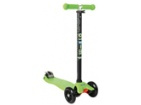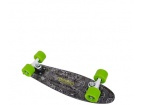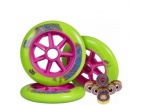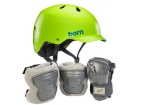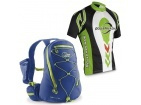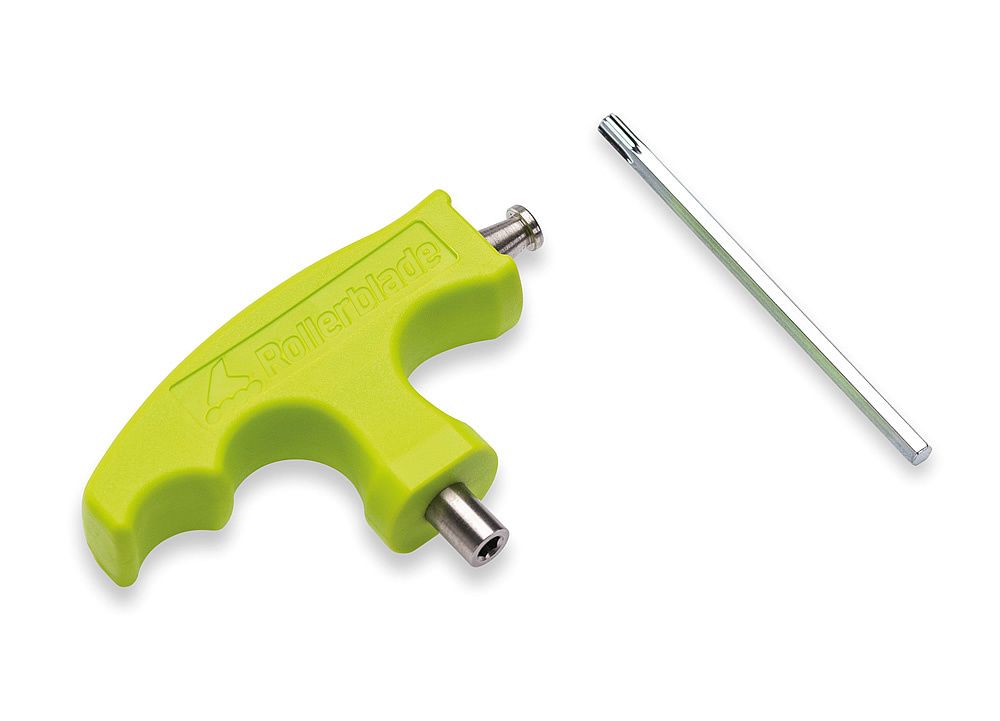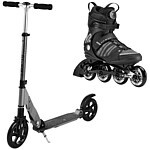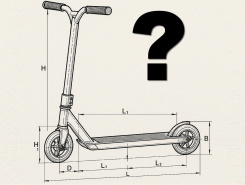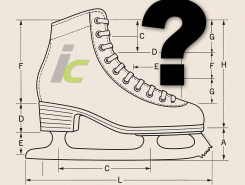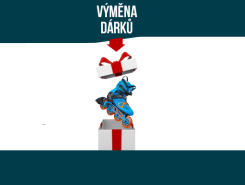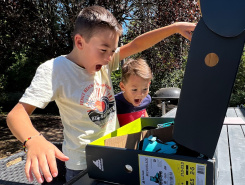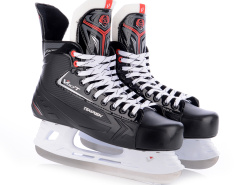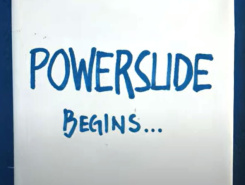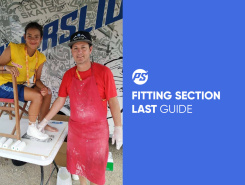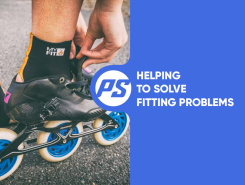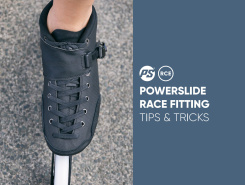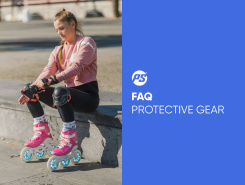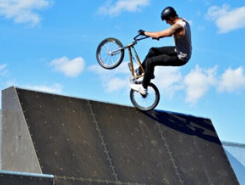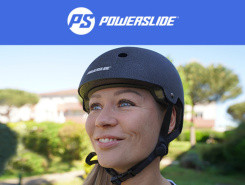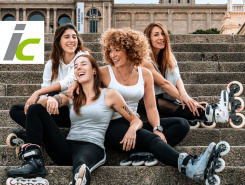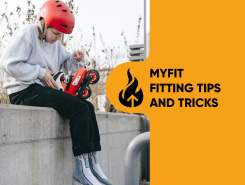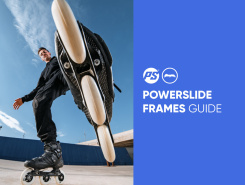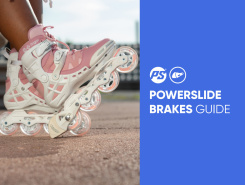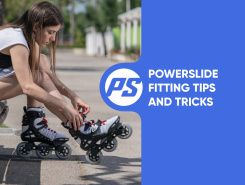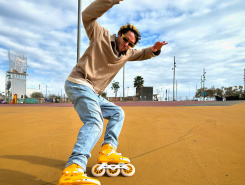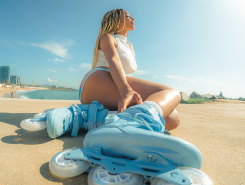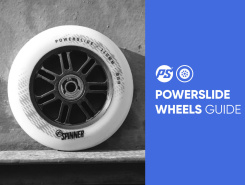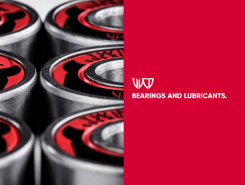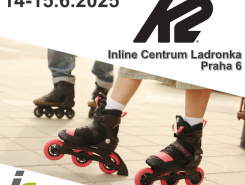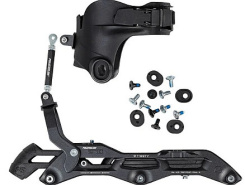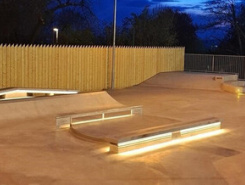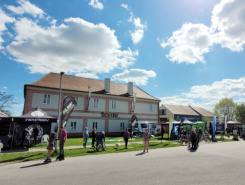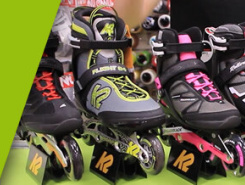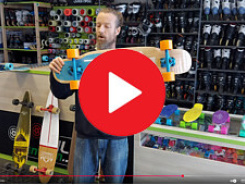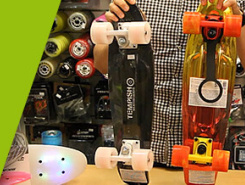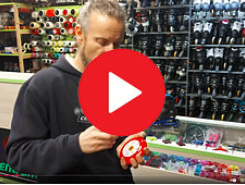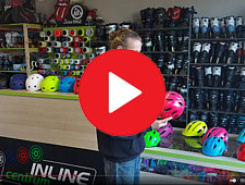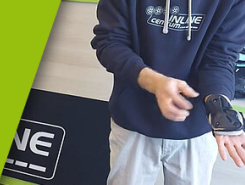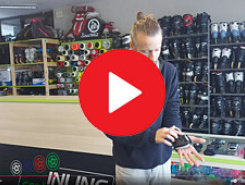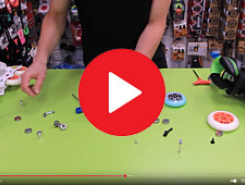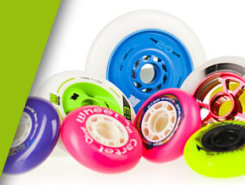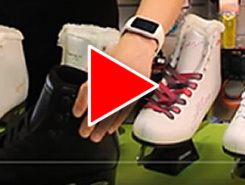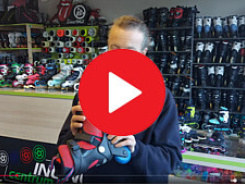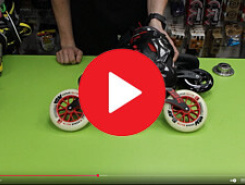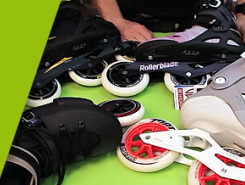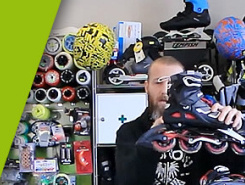Basic types of in-line skates

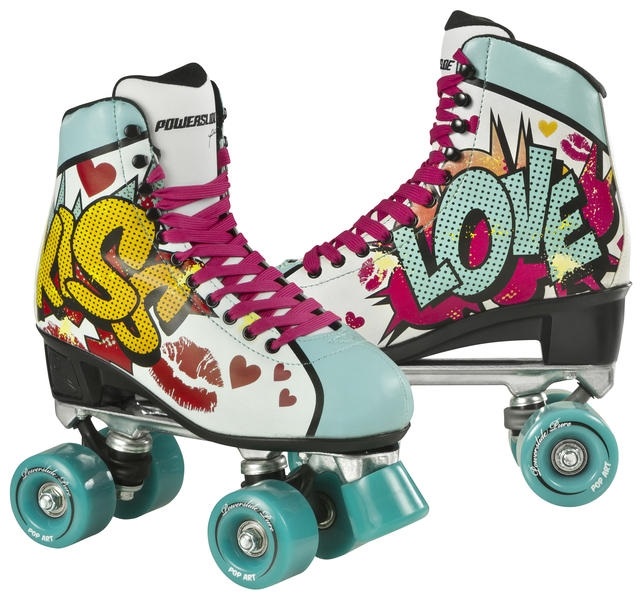
Most common types of in-line skates
1. Fitness skates
- most common type. Suitable for recreational and fitness skating on cycle tracks.
Types of fitness skates:
a) recreational fitness skates (suitable for beginners): size of wheels is 80-84 mm, low speed, good nimbleness, plastic or aluminium frame, bearings usually ABEC/ILQ/SG 5 or 7.
b) fitness skates (suitable for faster ride and experienced skaters): size of wheels is 90-100mm, higher speed, worse nimbleness, higher focus point, aluminium alloy frame, bearings usually ABEC/ILQ/SG 7 or 9.
Typical features: textile soft boot, higher chimney, size of wheels 80-100 mm, usually rivetted frame (sometimes screwed), usually soft wheels (especially with recreational types), always have a brake included.
Pros: comfort, weight, ventilation (according to type), price friendly, wide range of selection
Cons(according to type): soft boot, worse transformation of energy to rebound, slower response, user quiality of frame and wheels
Producers: there are many produces who offer fitness skates. The biggest and the most famous in these days are: K2 (USA), Powerslide (Germany) a Rollerblade (USA). The most famous Czech producer is Tempish. Other skate producers: Roces (ITaly) nebo Fila (Italy). Producers who specialized in certain type of skates: USD (aggressive), Seba (freeskate), Vanilla (speed) atd. Filial brands of famous producers which specialized in certain types of skates:Playlife, USD, Doop (Powerslide), Bladerunner (Rollerblade) etc.
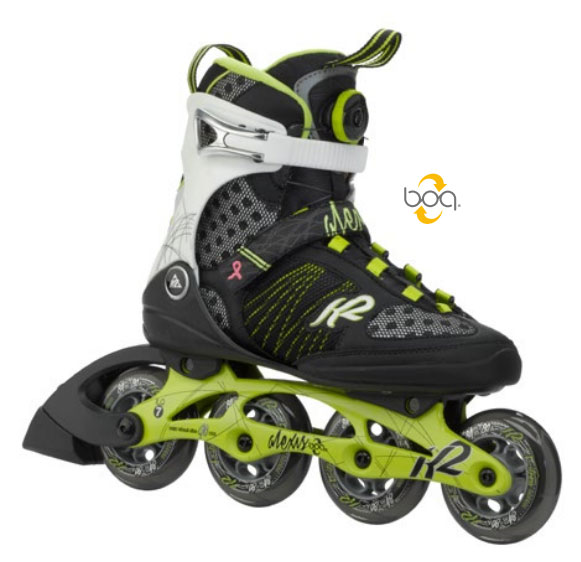
2. Freestyle skates
-primarily made for trick ride (dance, jumps, backride, tricks, slalom, free jump etc.) Typical atributes are hard shell, short and solif frame, small wheels.
Freestyle types:
a) Freeskate/urban (city ride, jumps, stairs, backride, jumps over barriers)
b) Freestyle/slalom (dancing, slalom)
Typical features: solid boot - plastic composite/carbon/fibreglass, wheel size 76-84mm, short firm frame with adjustable positon, higher chumney with firm flex, always without a brake. High-quiality models can have heat mouldable boot.
Pros: nimbleness, support, response, transfer of energy, universal use, resistance, acceleration, longevity of components.
Cons: higher weight, worse ventilation, lower speed, lower comfor (according to type).
Use: wide range of activities. Suitable for beginners and eperienced skaters as well. Can be used for classical fitness skating, city ride, tricks and slalom. Also for inline hockey or skateparks. Due to solid boot they are suitable for hockey skating (shuffle, sprint, backride). Disadvantage can be absence of brake and higher prices.
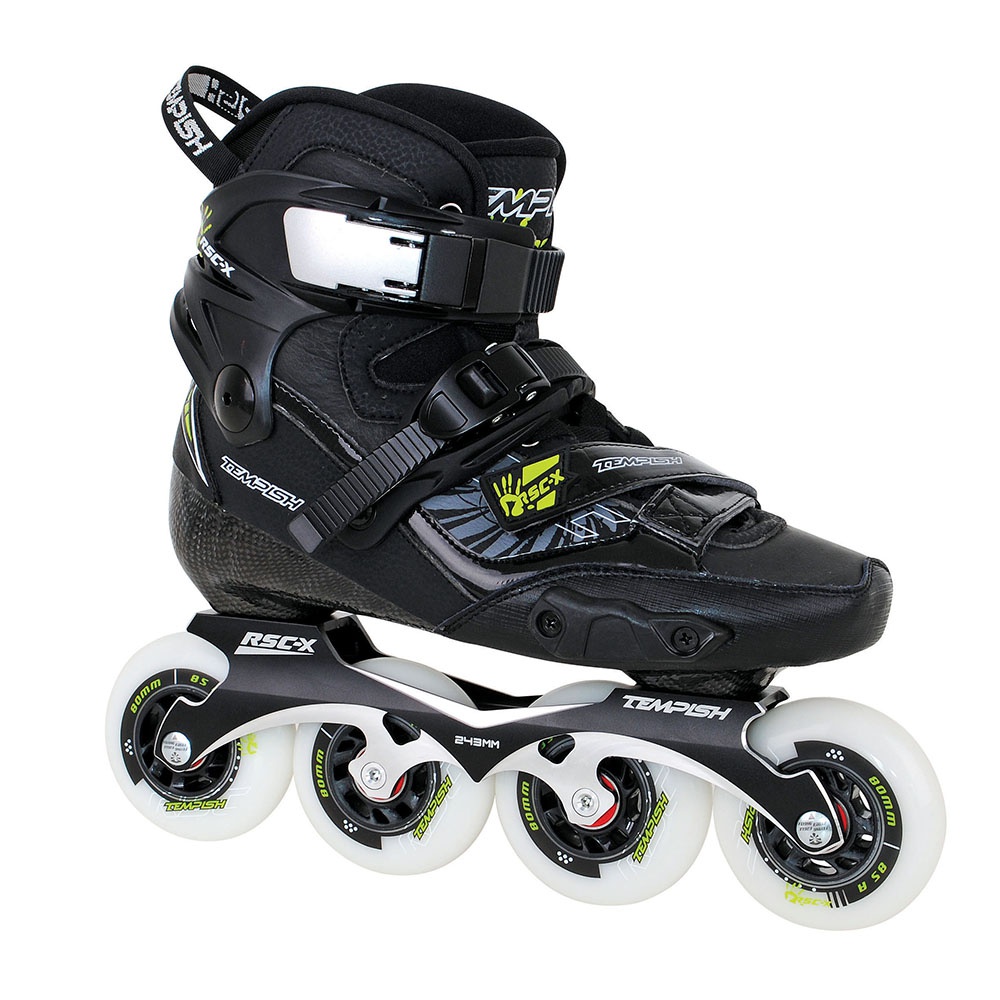
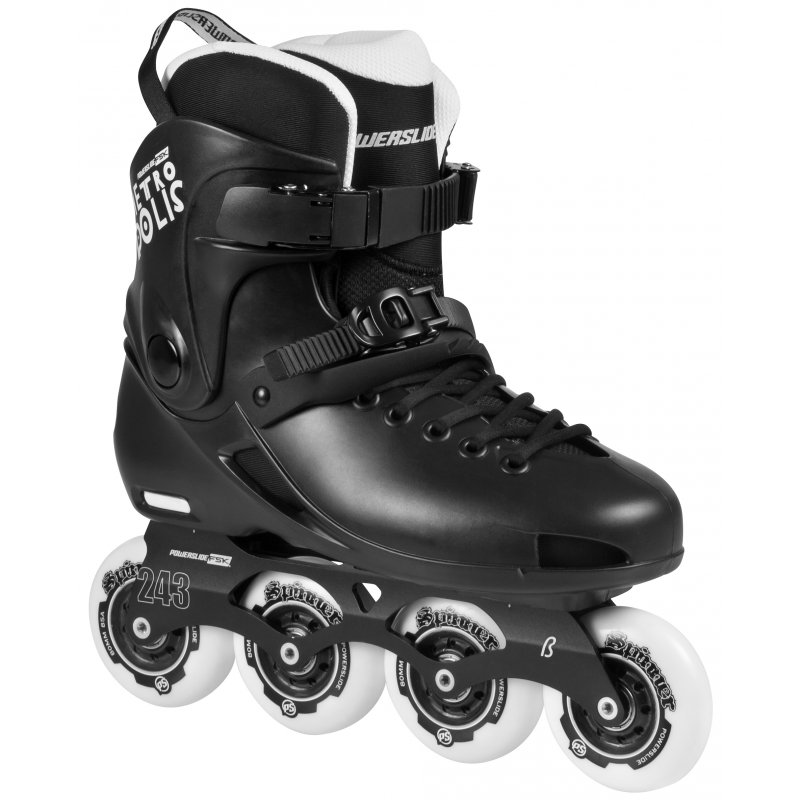
3. Aggressive skates
- heavy skates for jumps, rails, ramps, skateparks etc.
Typical features: firm and heavy boot - plastic composite/fibreglass/carbon, soulplate, small wheels (usually 55-60mm), high chimney, space between the wheels for rails. Always without a brake.
Pros: resistance, absorbing, stability.
Cons: speed, weight, ventilation.
Powerblading skates: separate cathergory - hybrid of freeskate and aggressive skates. It is basically aggressive boot with longer frame for bigger wheels for faster ride (usually 76 or 8O mm - second picture)
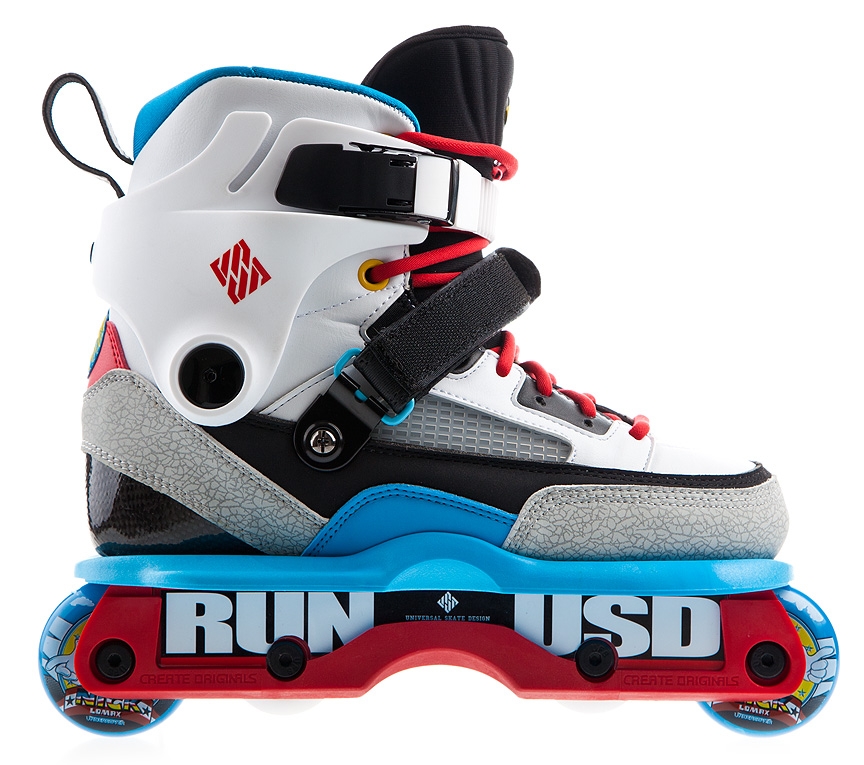
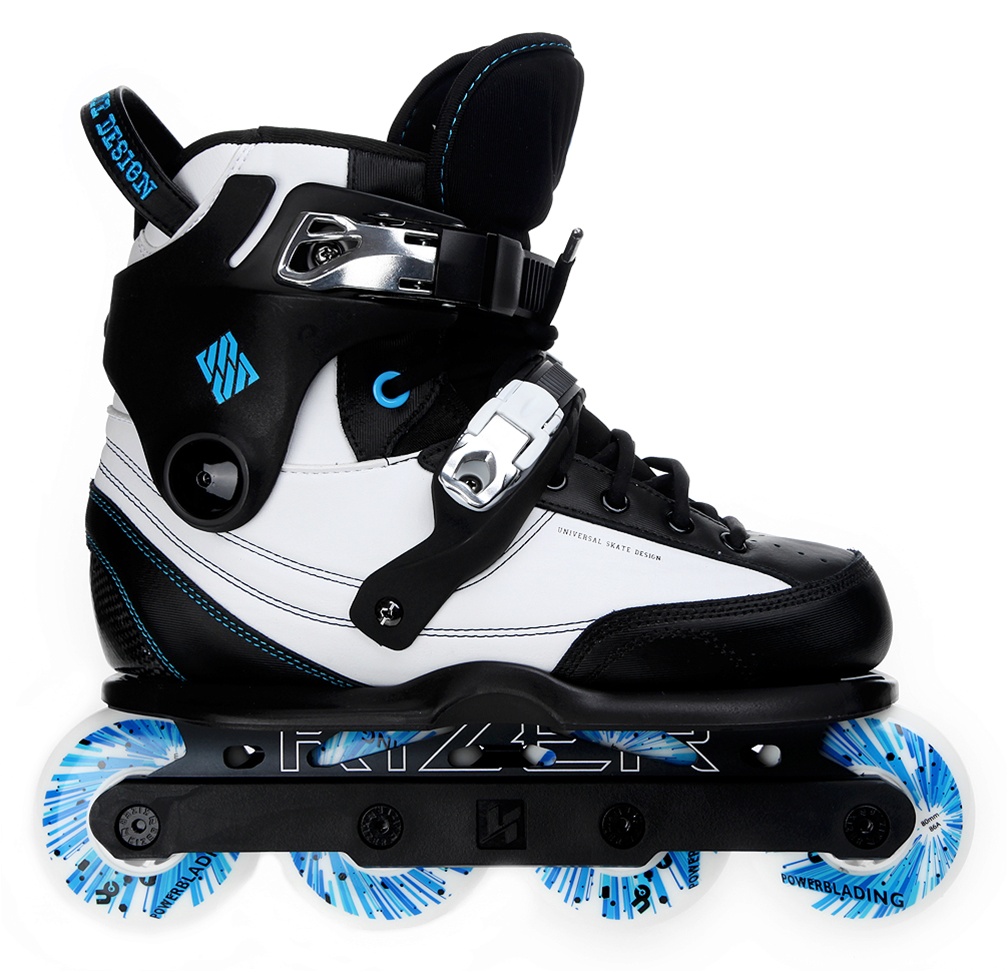
4. Speed skates
-low, solid skates with firm long frame and big wheels for fast ride and racing. Everything is subordinated to maximum speed.
Typical features: low and firm boot with minimum padding - composit fibreglass/carbon, size of wheels 100-125mm, light and firm screwed frame with adjustable positon. Harder wheels and better bearings, long boot without cuff (chimney). They are usually heat-mouldable. Always without a brake.
Pros: speed, firm, transfer of energy, responce, weight, quality
Cons: comfort, nimbleness, experience needed, unilateral use
Number of whees: usually it is now 4x 110mm wheels. Older models can have 5 wheels (this is today used only with downhill skates - fast ride down the hill - or alpine slalom which is basically just like ski slalom). Nowadayw it is popular to have just 3 wheels, it is combination 3x125mm (4x125 would need too long frame). Advantages of bigger wheels are higher speed and inertia. Disadvantage are higher focus point, therefore more pressure on ankles, worse acceleration and more demanding technique. Further season will show whether the set of 3X125mm will be popular or whether we will rather stay at old 4x110mm. Of course, it depends on certain type of speed skating discipline.
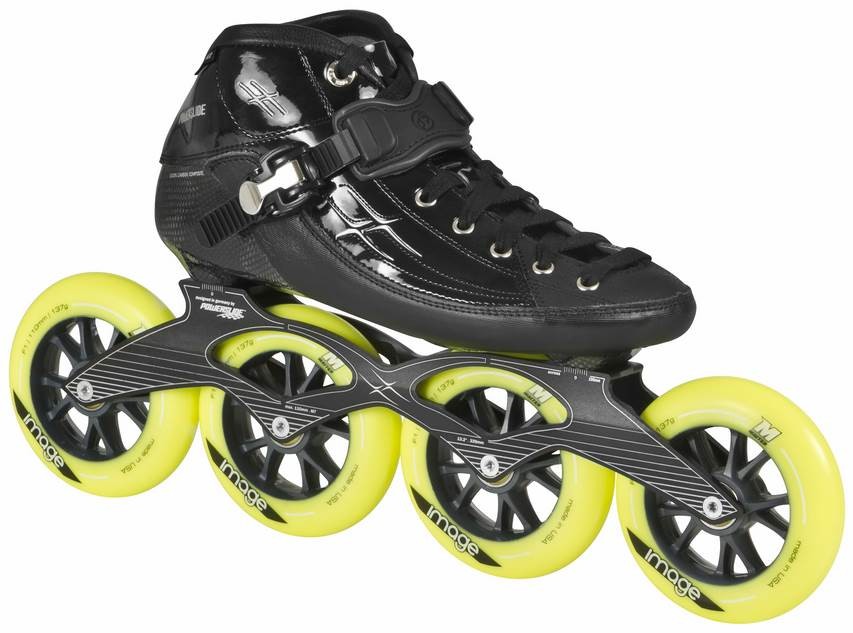
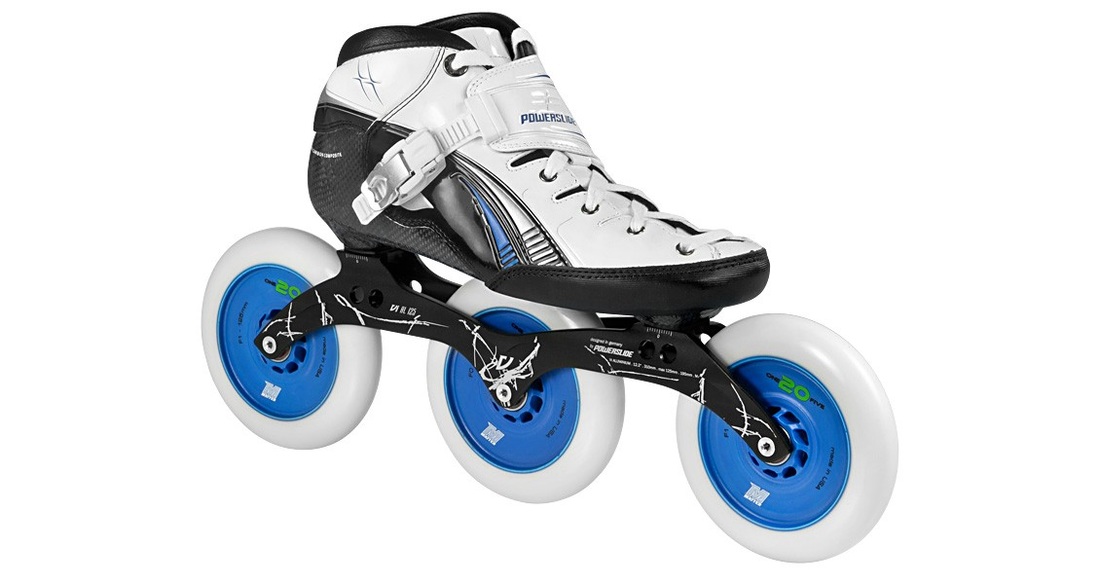
5. Semi-race skates
-skates which are on the borders speed and fitness cathegory. Suitable for long tracks and fast ride. Mid-level chimney, usually solid boot and big wheels.
Typical features: solid boot-composit fibreglass/carbon/nylon, mid-level chimney, solid screwed frame with adjustable positon. Wheels usually 100-125mm. More commonly without a brake. Sometimes possibility of heat moulding.
Pros: fast, firmness, trasnfer of energy, responce, quiality, inertia
Cons: nimbleness, lower comfort (according to type), higher price, worse acceleration
Toughness: some semi-race models are more like fitness skates - maintain textile material for higher comfort at the cost of worse energy transfer (K2 radical-second picture). Other models are more like speed skates and therefore provides better support (PS Marathon-first picture).
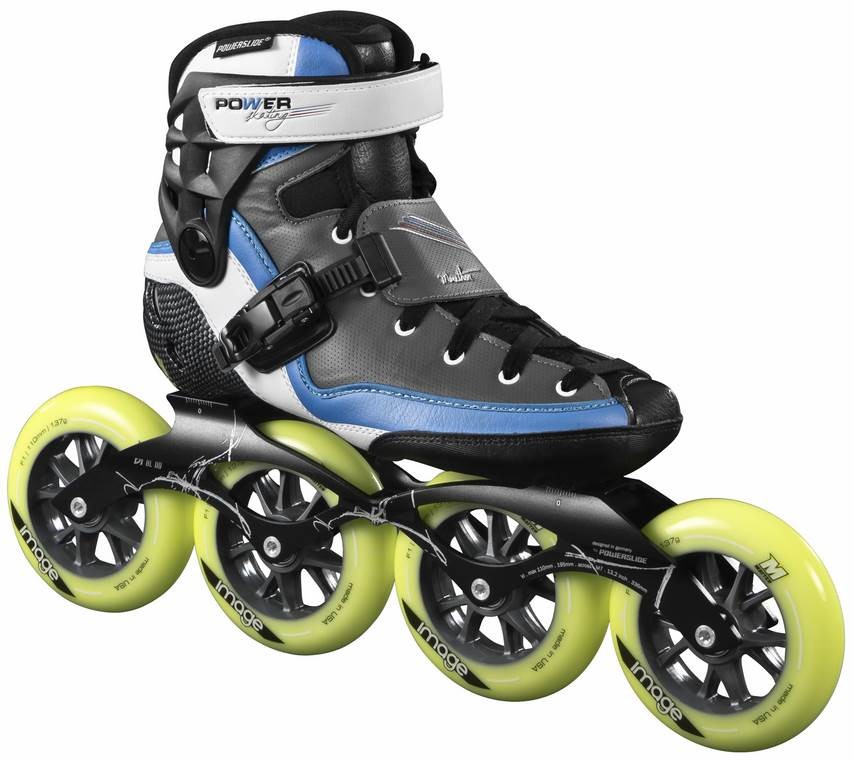
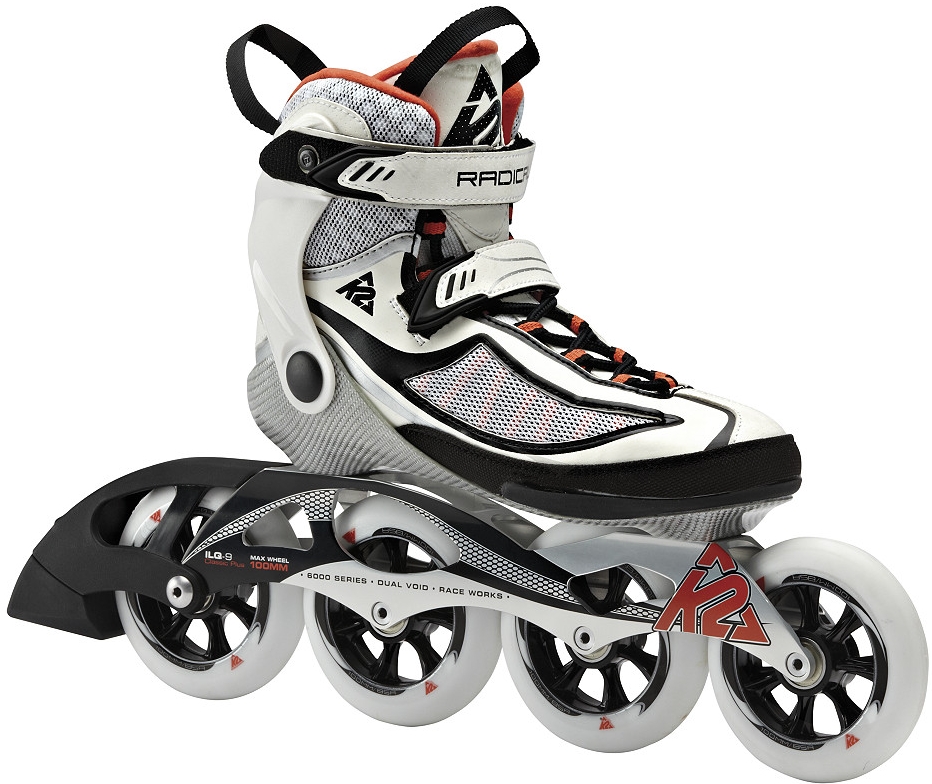
6. Trekking skates
-skates with two lines of wheels. Turning is based on skateboard frames. Skates are primarily used for recreational skating, roller dance, jam skating or rollerderby (racing team game on the oval) or trick ride. Most popular in USA.
Typical features: usually boot in shape of figure skate - PVC/PU/leather, unique trek frame based on skateboard trucks, brake is in the front, different way of skating (compared to inline skates), better side and worse front and back stability (compared to inline skates).
Pros: nimbleness, different type of skating,stability
Cons: weight, speed, comfort, range of choice, availabilty of spare parts
Boot shape: shape of the boot is different, according to purpose. Boot with lower ankle is for experienced skaters, jam skating or roller derby (picture 3). High boot is for figure skating, recreational ride or tricks.
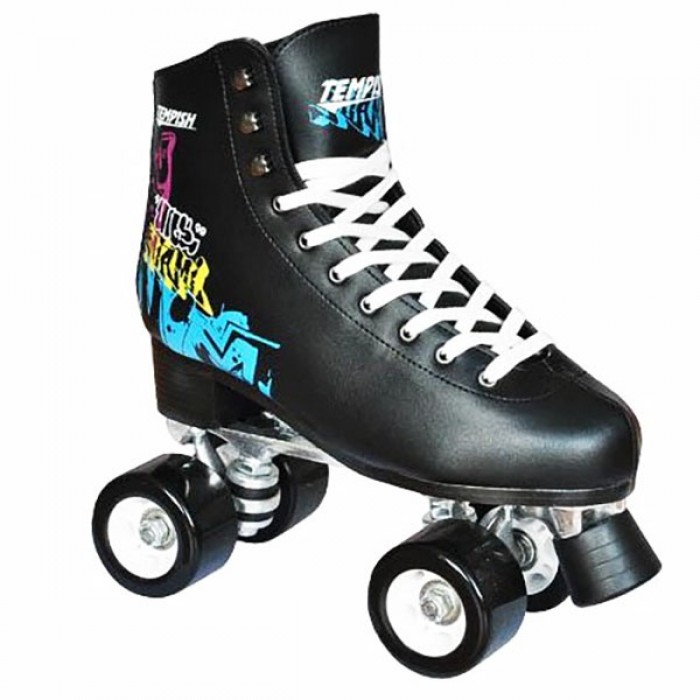
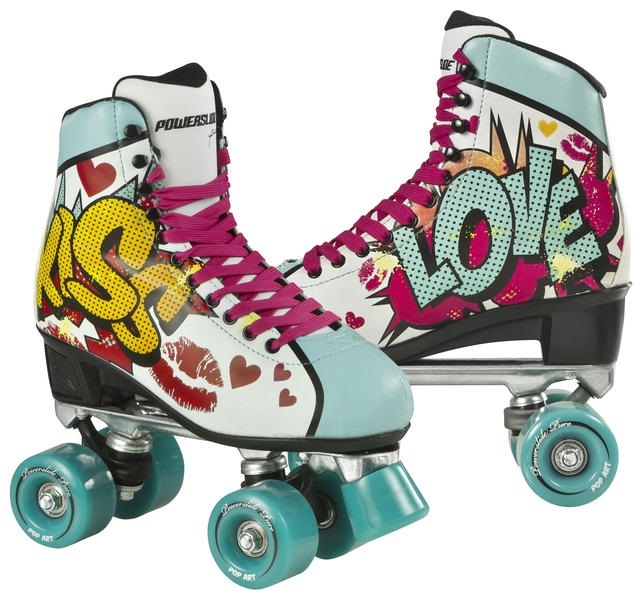
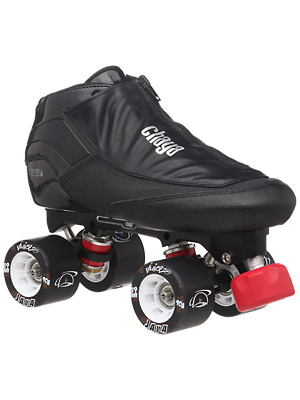
7. Nordic/off-road/terrain skates
-skates with inflatable wheels and long frame. Partly simulate cross-country skiing. Suitable outside the cyckle tracks and for worse surfaces. Skates are used with poles similar as cross-country skiing.
Typical features: usually inflatable wheels, long frame, fitness/freeskate type of boot, higher chimney, unusual brake, poles, different style of skating, wheels bigger than 125mm.
Pros: skating on different types of surfaced, arm excercise, cross-country skiing simulation
Cons: weight, speed, nimbleness, price
Wheel ski : different cathergory are Wheel ski. Basically it is frame with wheels with cross-country binding. Usually used by cross-country skiers as a way of training during summer months. (picture 4)
SUV skates: skates with inflatable wheels which are on traditional inline frame (=under the boot). They are more like inline skates rather than wheel ski. Main advantage is that they can be used on various types of surfaces. But the weight is higher, speed slower (compared to inline skating, picture 3).
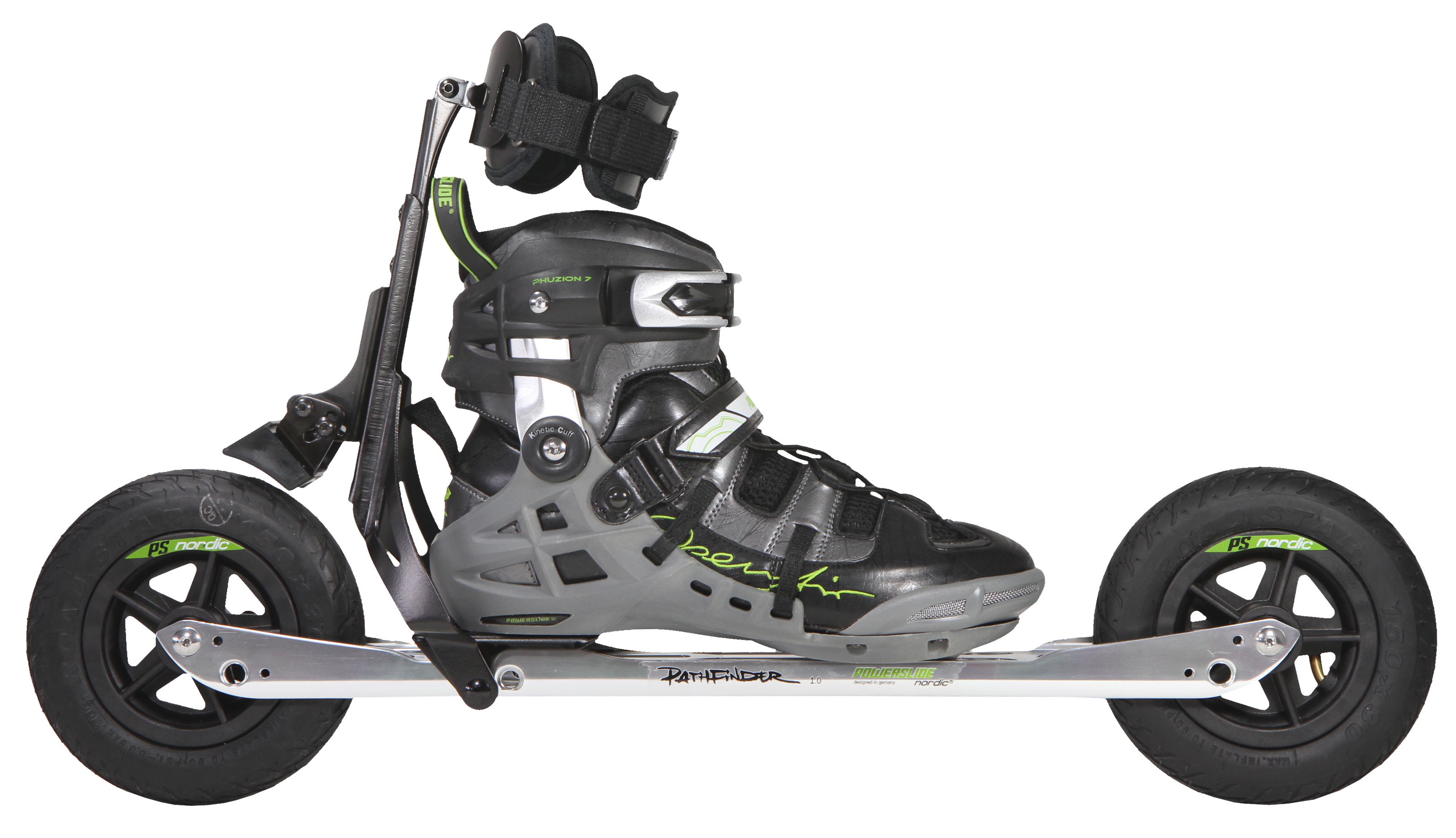
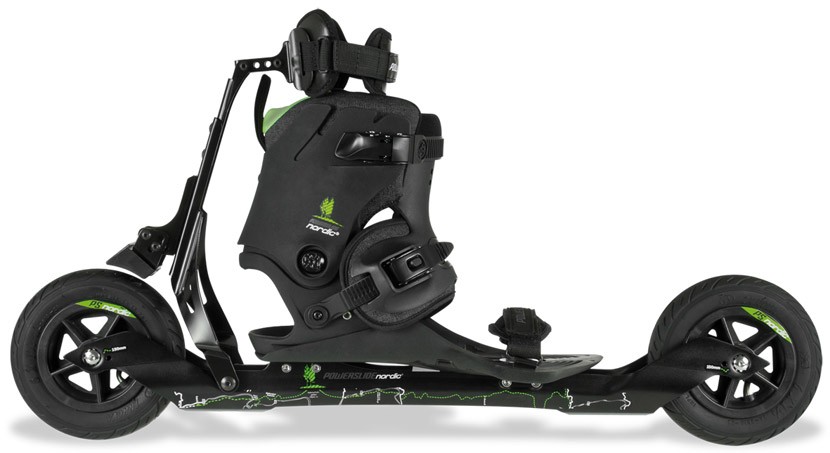
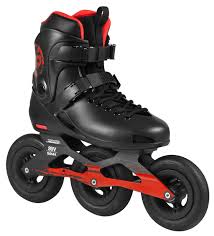

7. Hockey inline skates
- traditional canadian boot with inline frame. Skates have usually different wheels (rockering) to stimulate ice hockey skating. Suitable for in-line hockey skating and fitness as well.
Types:
a) Indoor ( special artifical surfaces) - soft wheels (- 80A)
b) Outdoor (concrete/asphalt) - hard wheels (+80A)
Typical features: boot as ice hockey boot, rivetted and short frame, different sizes of wheels (rockering), different hardness of wheels (according to purpose), size 72mm-80mm, always without a brake.bota
Pros: nimbleness, solid, acceleration
Cons: speed, comfort, ventilation.
Size: with inline hockey skates or freeskates is used rockering. It is about using different sizes od wheels. inline Hockey skates are usually with HI-LO SETUP (back wheels are bigger than front wheels). This setup is used for transfering weight to tip, which provides better stability and acceleration. Second type is Full rocker, when each wheel has different size (in shape of banana) to simulate ice hockey skating.


